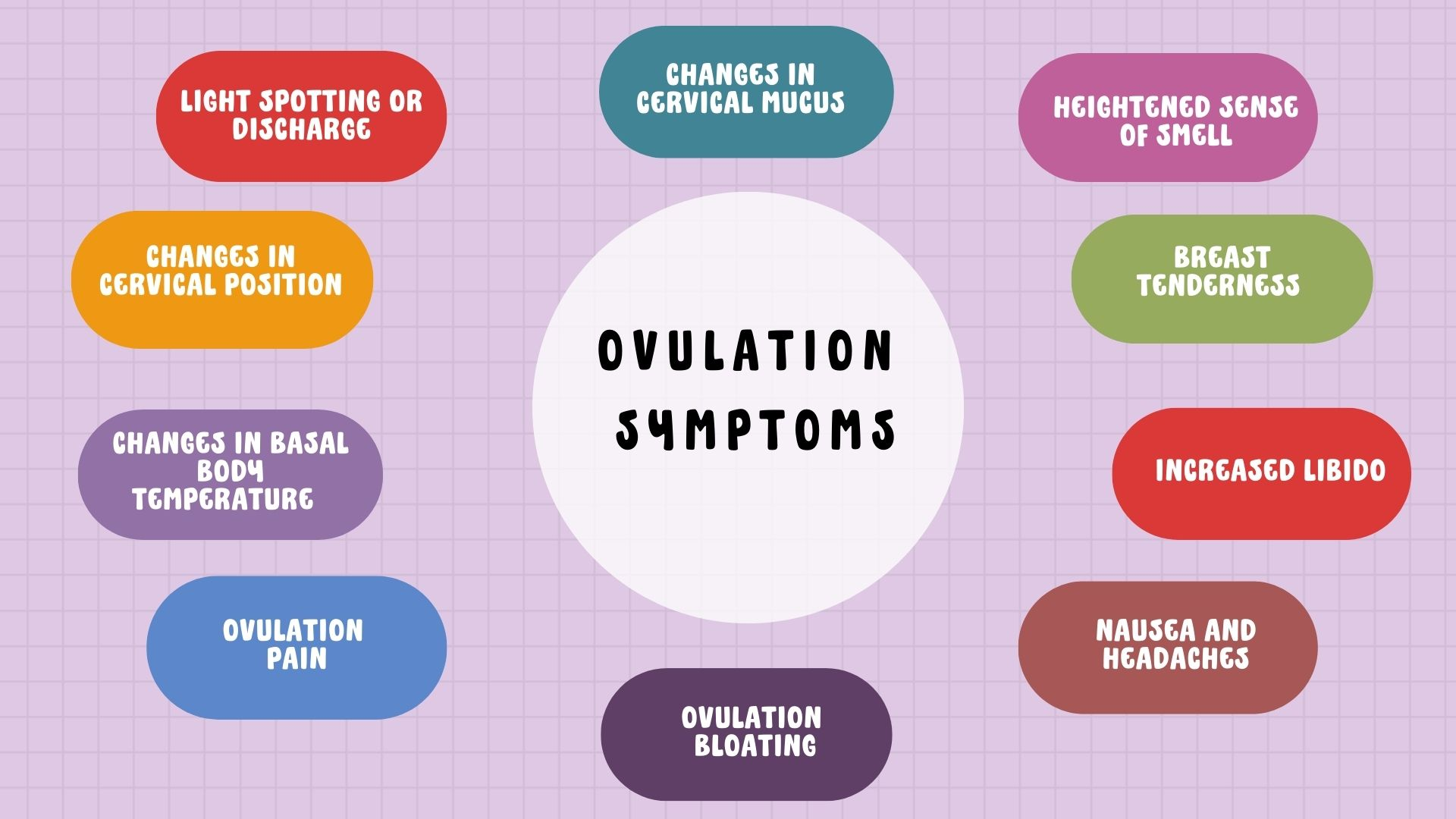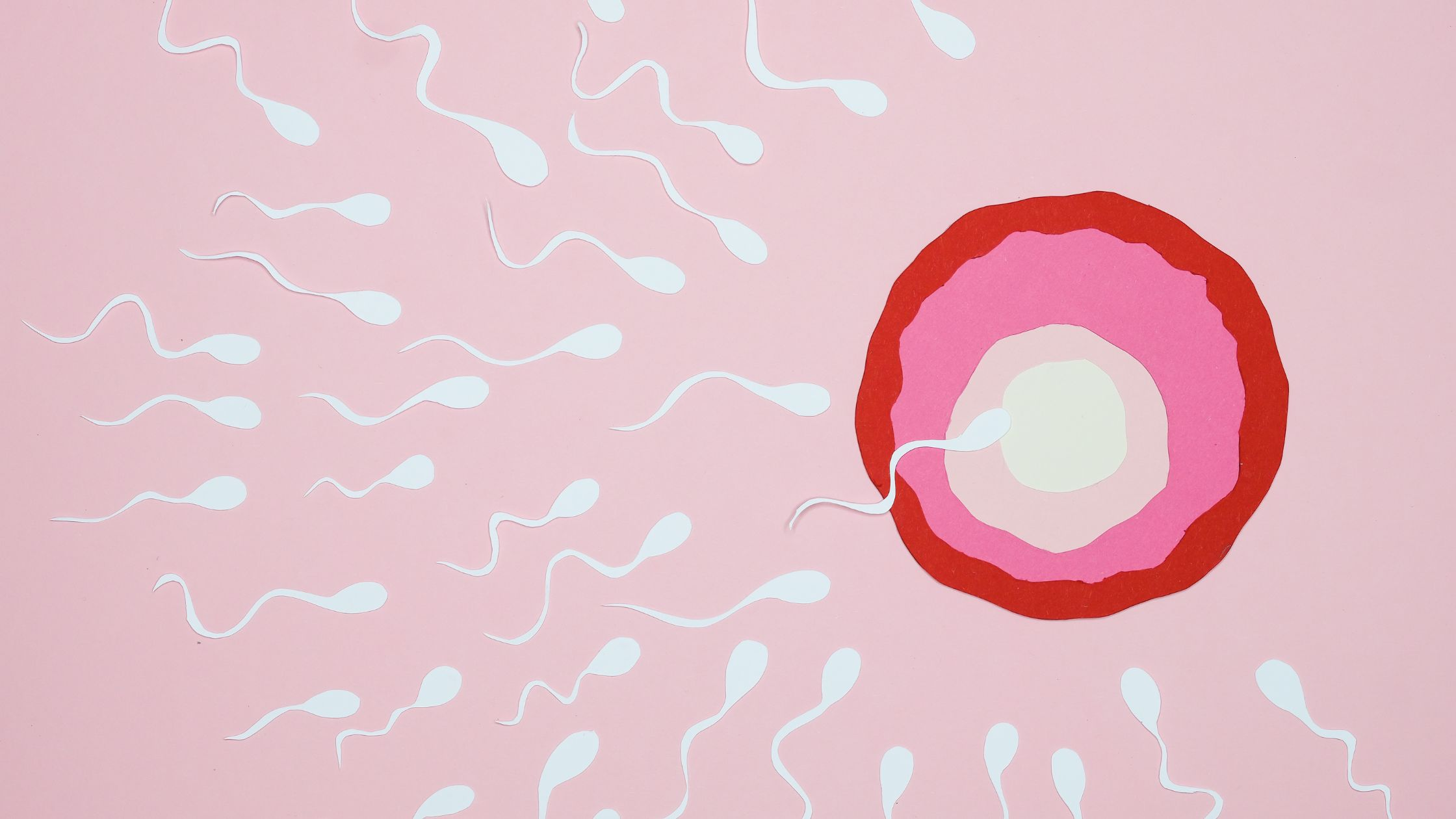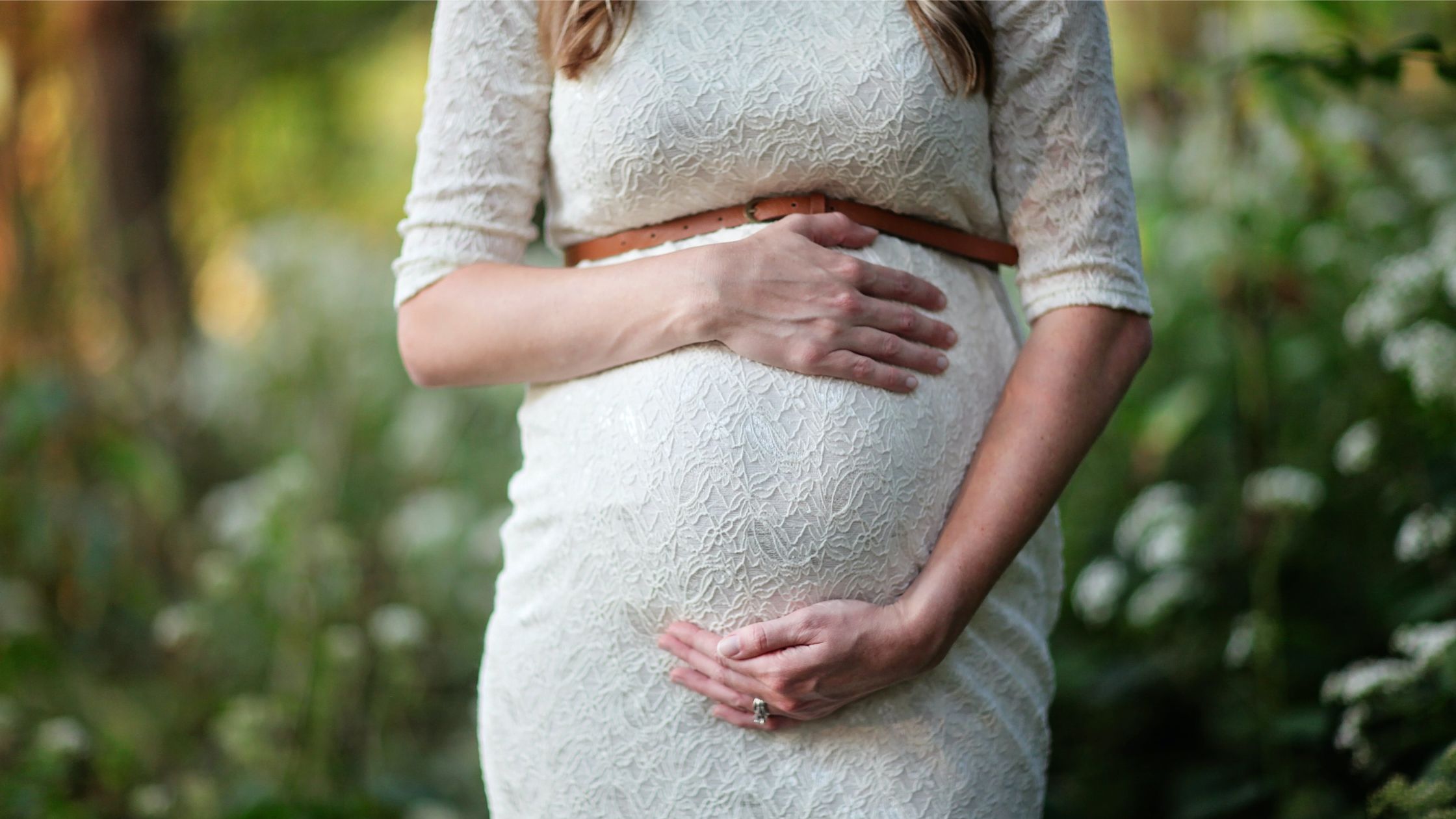Recognizing when pregnancy is possible is essential whether you’re trying to conceive or prevent an unexpected pregnancy.
Getting pregnant involves understanding your menstrual cycle, which consists of four stages – menstruation, follicular phase, ovulation, and luteal phase. While each step contributes to reproduction, the probability of conception varies.
For successful conception, it is crucial ovulation occurs. Ovulation is the stage where a mature egg is released from an ovary. The egg’s lifespan in the reproductive tract is roughly 24 hours, while sperm can survive up to five days in ideal conditions. This leads to a six-day fertility window per menstrual cycle—five days preceding ovulation and the day after.
It’s clear that you cannot conceive if you’re not ovulating, as there would be no egg for the sperm to fertilize. This non-ovulating phase is known as anovulation, a common cause of infertility. However, this condition is treatable, and several effective solutions are available today.
It’s worth noting that there’s a lot of misinformation and myths about fertility. Therefore, learning precisely when and how pregnancy can occur is crucial. This knowledge will give you a clearer understanding of when you can and can’t conceive.
If you’ve been attempting to conceive without success, you might want to confirm that you’re ovulating and consider seeking expert advice.
When Do You Ovulate? Signs of Ovulation

Ovulation, the release of a mature egg from an ovary, is an essential period in the female menstrual cycle. During a normal 28-day cycle, ovulation unfolds approximately 14 days before a new cycle begins. The fertile window extends from about five days before to one day after ovulation, and is primetime to get pregnant.
Whether you are trying to conceive (TTC) or trying to avoid getting pregnant, you need to be aware of the signs of ovulation:
- Cervical mucus becomes thin, clear, and stretchy, similar to the consistency of egg whites.
- The cervix becomes higher, softer, wet, and more open.
- Basal body temperature (BBT) rises
- Mild pelvic pain or twinges on one side of the lower abdomen during ovulation, known as Mittelschmerz.
- Breast tenderness or sensitivity
- Increase in libido
- Light spotting or bleeding
- Ovulation Predictor Kits (OPKs) are available over-the-counter and measure luteinizing hormone (LH) levels in urine, measuring the best time to get pregnant.
It’s essential to remember that no single sign or symptom can guarantee you’re ovulating. Women’s bodies can vary, and some women may not experience any noticeable signs of ovulation at all.
Suppose a woman is trying to conceive or prevent pregnancy. In that case, combining methods, such as tracking menstrual cycles, using ovulation predictor kits, and monitoring other fertility signs, can provide a more comprehensive picture of fertility and the fertile window.
Is It Possible to Get Pregnant Outside of Your Fertile Window?

The “fertile window” means the period in which conception can occur. In a standard 28-day menstrual cycle, this window typically spans six days (five days before ovulation and the day following it).
However, menstrual cycle length can significantly differ between individuals. Even among those with consistent cycles, the timing of the fertile window can be unpredictable due to the varying days on which ovulation can occur.
Contrary to common belief, conceiving outside the anticipated fertile window is possible. This is because the exact timing of ovulation can fluctuate each month, and sperm can survive within the body for several days. Therefore, although the probability may be lower at certain times, pregnancy can result from unprotected intercourse at any point during the menstrual cycle.
As such, there is no truly “safe” period for unprotected sex if the goal is to prevent pregnancy.
Let’s look at the likely of conception at each stage of the monthly cycle.
Days Before and After Ovulation
Even though the fertile window only occurs around ovulation, conception isn’t necessarily restricted to these days. The surprising resilience of sperm, capable of survival for up to five days within the female reproductive tract, means that intercourse a few days before ovulation can still result in pregnancy. Yet, the probability of conception falls sharply in the days following ovulation due to the egg’s limited lifespan.
On Your Period
Many people mistakenly think it is impossible to conceive during menstruation, but this is untrue. Even though the likelihood is minimal, there remains a chance of pregnancy during this time.
Several studies indicate that the length of the menstrual cycle can potentially affect pregnancy outcomes.
For example, if your menstrual cycle is relatively short, around 21 to 24 days, unprotected intercourse during your menstruation might lead to a pregnancy. This is due to the sperm’s ability to survive within the body for several days. So, if you ovulate earlier in your cycle, it is possible that pregnancy can occur from sex during your menstrual period.
Right Before Your Period
Given the typical lifespan of the egg, conceiving right before your period is highly unlikely. However, if you have a short menstrual cycle and ovulate very early, your chances of getting pregnant can increase.
Right After Your Period
In the days following menstruation, the likelihood of pregnancy gradually increases each day. In particular, women with shorter cycles, who experience early ovulation, could become pregnant from intercourse immediately after menstrual bleeding stops.
When is the Best Time to Get Pregnant?
The best time to get pregnant aligns closely with your body’s ovulation schedule. Ovulation occurs once during each menstrual cycle, typically leading to a fertile window that spans five days before ovulation and one day after. Knowing the signs of ovulation and using tools like ovulation predictors and period tracking apps can help you understand when ovulation happens, leading you toward the most favorable days to get pregnant.
Cycles Without Ovulation: Can You Get Pregnant When You’re Not Ovulating?
Ovulation isn’t always consistent, just like periods. It can happen on different days each month and sometimes you might not ovulate at all. This is entirely normal.
When the ovaries and the hormone regulator in the brain (pituitary gland) don’t communicate well, it leads to irregular ovulation.
The absence of ovulation, known as anovulation, prevents conception. Therefore, pregnancy cannot occur in a cycle without ovulation.
What’s Anovulation?
Anovulation is when a woman’s ovaries don’t release an egg during her menstrual cycle, making it tricky for her to get pregnant without medical help. It can cause irregular periods or even no periods at all.
The pathophysiology of anovulation involves multiple hormones, including follicle-stimulating hormone (FSH) and luteinizing hormone (LH), which play critical roles in the ovulation process. Disruptions in the hormonal balance can prevent the maturation and release of an egg from the ovaries, resulting in anovulation.
What Causes Anovulation?
Several factors and disorders can lead to anovulation.
- Hormone Imbalances: Anovulation is primarily caused by hormone imbalances, specifically disruptions in progesterone, luteinizing hormone (LH), and follicle-stimulating hormone (FSH) levels. When these hormones are not properly regulated, the ovaries may fail to release an egg, leading to anovulatory cycles.
- Polycystic Ovarian Syndrome (PCOS): PCOS is characterized by irregular menstrual periods, hyperandrogenism (excess male hormones), and polycystic ovaries. PCOS is one of the most common hormonal disorders in females of reproductive age.
- Stress: High-stress levels can disrupt the delicate balance of hormones in the body, potentially affecting the ovulation process and leading to anovulatory cycles.
- Extreme Weight Loss or Gain: Drastic changes in body weight, such as significant weight loss or gain, can impact hormone levels and interfere with ovulation.
- Thyroid Disorders: Dysfunction of the thyroid gland can cause hormonal imbalances that may lead to anovulation.
- Certain Medications: Some medications can interfere with the hormonal process of ovulation, leading to anovulatory cycles as a side effect.
- Structural Issues Affecting the Ovaries: Structural abnormalities or issues affecting the ovaries may hinder the release of mature eggs, causing anovulation.
What Are the Symptoms of Anovulation?
Anovulation often presents itself subtly, sometimes causing skipped periods. Women experiencing anovulation may have extended or shortened cycles or, in some cases, no menstrual cycle at all.
Some of the common signs and symptoms of anovulation include:
- Irregular Menstrual Cycles: Anovulation often leads to irregular or absent menstrual periods. Cycles may vary significantly in length, and some women might experience bleeding that they mistake for normal menstruation.
- Infertility: Since anovulation prevents the release of mature eggs, it can lead to difficulties in conceiving naturally. Women who do not ovulate regularly or experience anovulatory cycles may have trouble getting pregnant without medical interventions like fertility treatments or assisted reproductive technologies.
- Hormonal Imbalances: Anovulation is commonly associated with hormone imbalances, especially disruptions in the levels of hormones involved in the ovulation process, such as follicle-stimulating hormone (FSH) and luteinizing hormone (LH).
Women need to differentiate between regular and chronic anovulatory cycles. In regular anovulatory cycles, occasional anovulation is considered a natural part of menstruation and is not a cause for concern. However, if anovulation persists for a year or longer, it may indicate an underlying issue that requires medical attention.
How Is Anovulation Treated? Fertility and Other Treatments if You Don’t Ovulate
Fertility Treatments for Anovulation
- Ovulation Induction: This is a standard first-line treatment for anovulation. It involves using medications, such as Clomiphene citrate or Letrozole, to stimulate the ovaries and promote egg development.
- Injectable Gonadotropins: In cases where oral medications are ineffective, injectable gonadotropins like follicle-stimulating hormone (FSH) or human menopausal gonadotropin (hMG) may induce ovulation.
- In Vitro Fertilization (IVF): IVF may be recommended if other treatments fail or if there are additional fertility issues. During IVF, mature eggs are retrieved from the ovaries, fertilized with sperm in a laboratory, and then implanted into the uterus.
- Intrauterine Insemination (IUI): IUI involves placing washed and concentrated sperm directly into the uterus during ovulation to increase the chances of fertilization.
Hormonal Therapies
- Hormonal therapies may be prescribed to regulate menstrual cycles and correct hormone imbalances that lead to anovulation.
- Treatment of underlying conditions like polycystic ovary syndrome (PCOS) or hypothalamic-pituitary dysfunction may involve hormone therapy.
Lifestyle Changes
Lifestyle changes such as weight management, exercise, and stress reduction can improve ovulation and fertility.
Surgical Interventions
Surgical interventions may be necessary in cases of structural abnormalities or conditions like endometriosis.
Egg Donation and Surrogacy
For women with severe anovulation or premature ovarian failure, using donor eggs in IVF or employing a surrogate may be suitable options to achieve pregnancy.
Treatment choice depends on individual factors and the underlying cause of anovulation. Therefore, a comprehensive evaluation by a healthcare provider is necessary to determine the most appropriate treatment plan.
Takeaway
- Pregnancy primarily hinges on ovulation. Egg produced during ovulation survives for roughly 24 hours while sperm can live up to five days, creating a six-day fertility window.
- Numerous signs indicate ovulation, such as changes in cervical mucus, cervix position, basal body temperature, and mild pelvic pain, among others. Ovulation Predictor Kits (OPKs) are also useful tools.
- Conception can occur outside the anticipated fertile window due to the varying lifespan of sperm and the irregularity of ovulation timing.
- The best time to conceive is around ovulation. Ovulation predictors and period tracking apps can help identify the most fertile days in a cycle.
- You cannot get pregnant without ovulation. Anovulation, or the absence of ovulation, is a common cause of infertility, but it can be treated with various methods.
- Anovulation is a condition where no egg is released during a menstrual cycle. It is usually due to hormonal imbalance, stress, extreme weight changes, certain medications, and structural issues affecting the ovaries.
- Symptoms of anovulation include irregular or absent menstrual cycles, infertility, and hormonal imbalances. Chronic anovulation might indicate a serious health issue that needs medical attention.
- Treatments for anovulation include ovulation induction, injectable gonadotropins, in vitro fertilization (IVF), intrauterine insemination (IUI), hormonal therapies, lifestyle changes, surgical interventions, and options such as egg donation and surrogacy.
- The choice of treatment for anovulation depends on individual factors and the underlying cause, making it essential to consult a doctor for a comprehensive evaluation.
References:
Soumpasis, I., Grace, B., & Johnson, S. (2020). Real-life insights on menstrual cycles and ovulation using big data. Human reproduction open, 2020(2), hoaa011. doi.org/10.1093/hropen/hoaa011Grieger, J. A., & Norman, R. J. (2020). Menstrual Cycle Length and Patterns in a Global Cohort of Women Using a Mobile Phone App: Retrospective Cohort Study. Journal of medical Internet research, 22(6), e17109. doi.org/10.2196/17109Mahé, C., Zlotkowska, A. M., Reynaud, K., Tsikis, G., Mermillod, P., Druart, X., Schoen, J., & Saint-Dizier, M. (2021). Sperm migration, selection, survival, and fertilizing ability in the mammalian oviduct†. Biology of reproduction, 105(2), 317–331. doi.org/10.1093/biolre/ioab105Ferreira-Poblete A. (1997). The probability of conception on different days of the cycle with respect to ovulation: an overview. Advances in contraception : the official journal of the Society for the Advancement of Contraception, 13(2-3), 83–95. doi.org/10.1023/a:1006527232605Soria-Contreras, D. C., Perng, W., Rifas-Shiman, S. L., Hivert, M. F., Chavarro, J. E., & Oken, E. (2022). Menstrual cycle length and adverse pregnancy outcomes among women in Project Viva. Paediatric and perinatal epidemiology, 36(3), 347–355. doi.org/10.1111/ppe.12866Harding, M., & Yu, L. (2022, January 4). Premenstrual Dysphoric Disorder. Medscape. https://emedicine.medscape.com/article/253190-overviewRasquin Leon LI, Anastasopoulou C, Mayrin JV. Polycystic Ovarian Disease. [Updated 2022 Nov 15]. In: StatPearls [Internet]. Treasure Island (FL): StatPearls Publishing; 2023 Jan-. Available from: https://www.ncbi.nlm.nih.gov/books/NBK459251/Pacific Fertility Center Los Angeles. (n.d.). Anovulation. Retrieved July 20, 2023, from https://www.pfcla.com/anovulationCleveland Clinic. (n.d.).Anovulation. Retrieved July 20, 2023, from https://my.clevelandclinic.org/health/diseases/21698-anovulationLawrenz, B., Melado, L., & Fatemi, H. M. (2023). Ovulation induction in anovulatory infertility is obsolete. Reproductive biomedicine online, 46(2), 221–224. doi.org/10.1016/j.rbmo.2022.08.102Centers for Disease Control and Prevention. (2021, March 15). Infertility. Retrieved July 20, 2023, from https://www.cdc.gov/reproductivehealth/infertility/index.htmCoFertility. (n.d.). Fertility Statistics: 35 Stats You Need to Know in 2023. Retrieved July 20, 2023, from https://www.cofertility.com/family-learn/fertility-statistics
